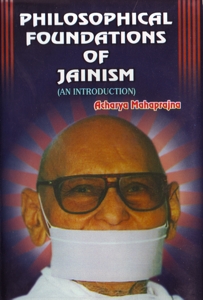It is but natural that on any matter as complex as the Religion or Philosophy, there would be diverse view-points based on logic and realizations of the different masters. The great variety we find in the philosophical field is the result of that. We can categorize the Indian philosophical tradition in two broad groups—1. 'Brāhmaṇa' (or Vedic) and 2. 'Śramaṇa'. While 'Mīmāṃsā' and 'Vedāṅta' fall into the first category, the 'Jain' and the 'Buddhist' are related to the Śramaṇa tradition. 'Nyaya-Vaiśeṣika' appear too far-off from the 'Brāhmaṇa' tradition. 'Sāṅkhya' appears to be treading the same path as that of the Jain philosophy, although traditionally speaking it is regarded to be in the Brāhminical category. A classification based on tradition only is, therefore, not very useful in tracking the evolution of the philosophical tradition. It would be more logical to group different philosophies according to their thought-content.
Jainism has developed a new philosophical doctrine called 'Anekānta', which tries to look at different philosophical concepts through a multi-visionary angle. 'Anekānta' tries to make an independent and holistic evaluation of any stream of thought. 'Anekānta' adopts an approach that synthesises different modules of philosophical doctrines. None is condemned as undesirable or wrong nor any one is treated as a favourite. All aspects of an issue are considered together in order to reach any conclusion with regard to the ultimate truth.
'Vedānta' has gone to great lengths so far as 'non-dualism' (abheda) is concerned, whereas the Buddhist philosophy has marvelled in analysing the nature of diversity (bheda). Jainism tries to establish a synergie between these two streams of thoughts known as 'bhedābheda'. It maintains that 'bheda' (difference) and 'abheda' (identity) are relative to the way we look at any particular thing. The Jain philosophy declares that all the diverse view-points may appear to be correct in their own respective set-ups but the ultimate reality can only be explored when we look at them in a holistic fashion through 'Anekānta' vision. The soul has been described as 'kūṭastha' (absolutely unchangable) by 'Sāṅkhyas', where as the 'Buddhists regard it as 'kṣaṇika' (momentary). The Jain philosophers have blended the two attributes and describe the soul as 'pariṇāmi-nitya' (persistence through change). Unfortunately the philosophers of the later period do not seem to have comprehended this true purport of 'Anekānta'. Had it been so, it would have put to rest all the controversies in the philosophical arena and led to a more logical development of the philosophical thought to serve any meaningful purpose.
All the philosophical streams have laboured a lot to find solutions to the problems that we face in the real world. But none can claim that it has solved all the problems. The Jain philosophers adopted 'Anekānta' approach towards different philosophies, and therefore, it could serve as a bridge between them. This is the foundation on which It has built its major planks of the thesis on 'ahiṃsā' (non-violence) and 'maitri' (compassion). The root-cause of all the intellectual problems is that since we are unable to resolve our thoughts, they lead to agitation and ultimate friction in the real life. But when look at any issue through a multi-dimensional view-point, the differences dissolve into an organic whole and give us a holistic view.
Take for example any object. You will find that it has infinite attributes and to know them all it requires a holistic vision incorporating infinite points of views. Each one of them is only a partial truth. The whole truth can be comprehended only through an integrated vision. Further, it is also true that one can know the truth in its entirety, but it cannot be described in words, since all the vocal expressions are conditioned by the limitation of a particular stance or the direction of vision. Therefore, there would always be the possibility of divergent view-points or opinions on any issue. More often we get trapped into futile debates arguing for and against a view-point. This results at time into conflicts. In such wordy duals, one stream represents anekānta or 'sat ekānta dṛṣṭi' culminating into 'ahiṃsā' (non-violence) and the other, 'asat ekanta drsti' leading to 'hiṃsā' (violence).
Each piece of the matter, though in itself is a replica of the whole, it manifests itself into many diverse states of existence which are infinite—'ananta dharma'. Even when we realise its basic integrity, it is difficult to express it due to the limitations of our fragmented etymological expression, which is relative to time, environment and the context. So every expression is a partial truth, based on which a particular doctrine is constructed. Such partial truths then start a chain of debates - pro and against. In the heat of the arguments, nobody bothers to take into account - when and in what context or sequence a particular expression was used to describe a certain thought. We may go on discussing endlessly since the ultimate truth would never be realized through the rubbing of part-truths against each other. The only way to success is through harmonization of the part-truths.
Lord Mahavira said—'Reality is relative' and therefore, it cannot be realised by a piece-meal approach. You need to contemplate on the relativity, that binds all the pieces together. So don't think that what you see or feel is the only truth or the whole of it. There should always be room to accommodate different view-points, and synthesize them into a comprehensive truth. Lord Mahāvīra preached—'Do not be biased and reject any thought off hand, try to understand it through Anekāntika vision. Thus 'Ahiṃsā' starts at the very beginning of the thought process in Jainism.
 Acharya Mahaprajna
Acharya Mahaprajna

